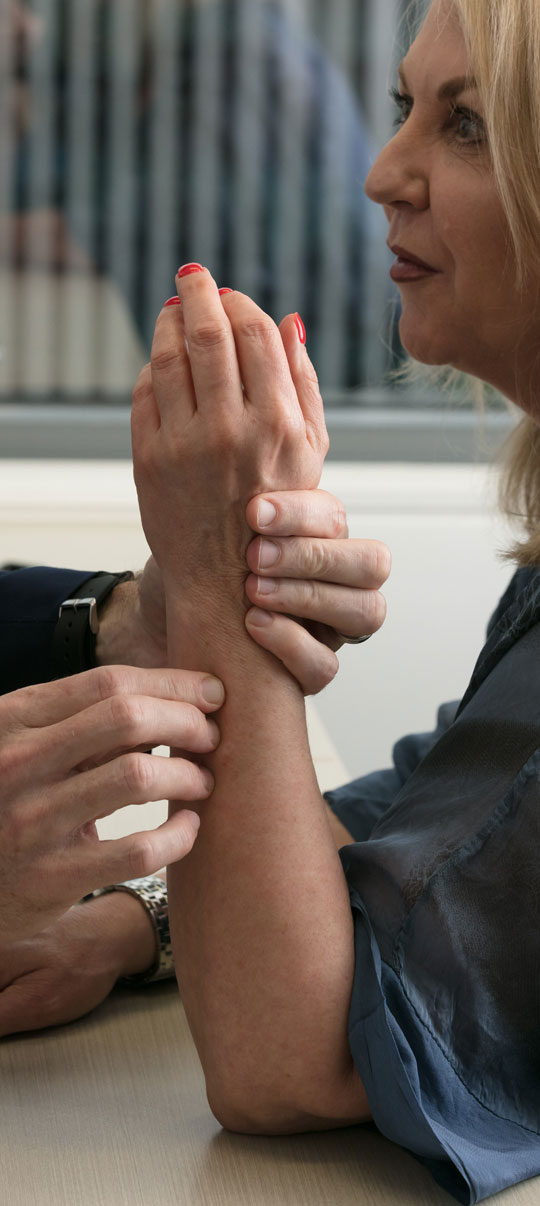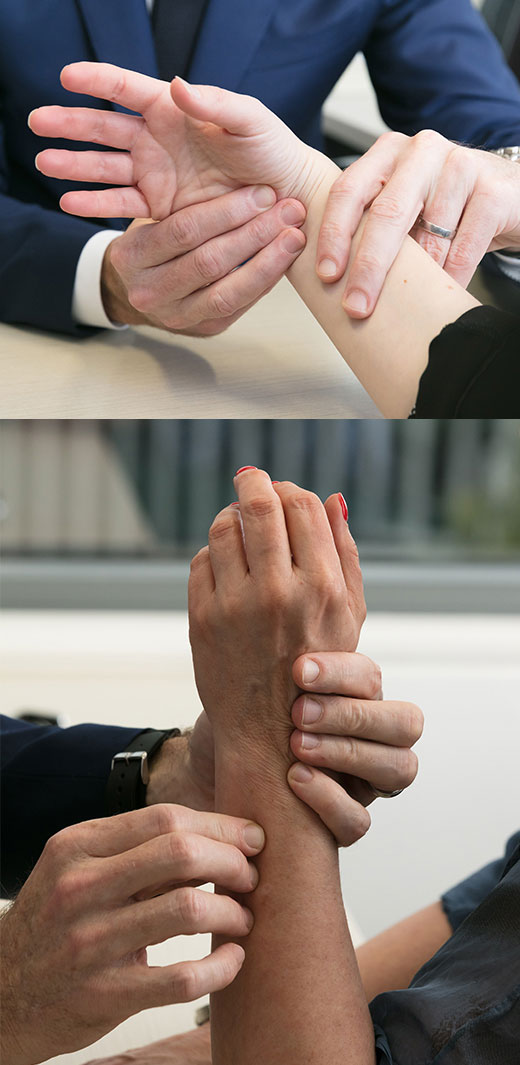Wrist Pain
It is generally a good idea to identify the cause of wrist pain.
Sometimes after a fall, it can indicate the presence of an injury which may go on to cause significant problems if left untreated. An example of this would be a scaphoid fracture, which if not diagnosed and treated can go on to scaphoid non-union and then arthritis.
Sometimes the pain occurs without a recent injury but is causing significant difficulties in carrying on in life. In these cases, it is important to make an accurate diagnosis, where possible, before commencing treatment. Otherwise, treatment can be prolonged, expensive and ineffective.
Whilst there are many causes of wrist pain, it is generally possible to whittle down the possible causes to a few, just by talking to the patient and examining the wrist. Plain x-rays are almost always helpful unless there is a very obvious soft tissue cause, such as de Quervain’s disease. X-rays always show something! There is no such thing as “normal”. Sure, there may be no obvious fracture, but every wrist is different, just as faces are. X-rays can identify some of the variable ways the wrist moves and the variable relationships of the bones size and shapes. These differences may predispose to many different problems.
Sometimes further imaging is helpful, but it is best chosen after the problem has been assessed by someone who knows about wrist problems. The imaging should be appropriate for the most likely problem. It is not simply a matter of getting “a scan” which will tell us exactly the diagnosis. Both ultrasound and MRI can be inaccurate, both over-diagnosing and under-diagnosing wrist problems.
The location of the pain can be helpful in narrowing down the possible diagnoses. The terms we use for the location of wrist pain are pretty simple:
Dorsal – the back of the wrist
Volar – the palmar side of the wrist
Central – the center of the wrist (dorsal or volar)
Radial – the thumb side of the wrist
Ulnar – the little finger side of the wrist
We can group important causes of a wrist, according to where the pain occurs. That is why it is important to be as clear as possible when explaining to the doctor where the pain is felt.
For Doctor Googlers out there, have a go at making your own diagnosis:


Dorsal Wrist Pain
Radial-Dorsal
Bone
- radio-scaphoid arthritis
- STT arthritis
- scaphoid fracture
- scaphoid non-union
Soft-tissue
- De Quervain’s disease
- intersection syndrome
Central-Dorsal
Bone
- scaphoid proximal pole non-union
- Kienbock’s disease
- radio-lunate arthritis
- mid-carpal arthritis
Soft-tissue
- EPL tendonitis
- extensor tendonitis
- scapholunate ligament insufficiency
- DCSS tear
- dorsal inter carpal ligament tear
Ulna-Dorsal
Bone
- ulno-carpal abutment
- hamate impingment syndrome
- DRUJ arthritis
- distal ulna fracture
Soft-tissue
- TFCC tear
- lunotriquetral ligament tear
- ECU instability
Volar Wrist Pain
Radial-Volar
Bone
- scaphoid fracture
- scaphoid non-union
- radio-scaphoid arthritis
- thumb CMCJ arthritis
Soft-tissue
- FCR tendonitis
- volar ganglion
Central-Volar
Bone
- Kienbock’s disease
- lunate intra-osseous ganglion
Soft-tissue
- carpal tunnel syndrome
- flexor tendon synovitis
Ulnar-Volar
Bone
- pisiform fracture
- hamate hook fracture or non-union
- pisotriquetral arthritis or instability
- DRUJ arthritis
Soft-tissue
- DRUJ ganglion
- FCU tendonitis
- volar TFCC problem
- Guyon’s canal syndrome



